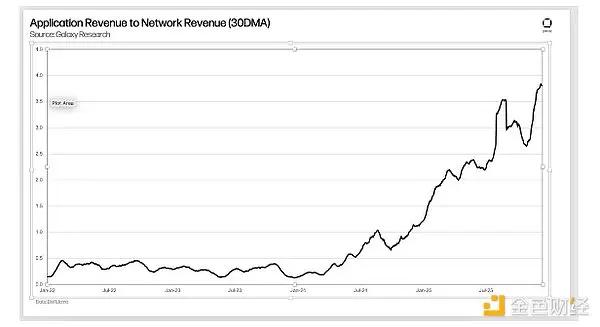Preface
Although the total market value of cryptocurrencies has evaporated by nearly $900 billion since Trump took office, with Altcoins entering a deep bear market, the total market value of stablecoins has continued to reach historical highs. According to defillama's data, the current total market value is $230.45 billion, increasing by $2.3 billion in the past seven days. Compared to the same period last year, the stablecoin market value has grown by 56%. In the overall market value, Tether's USDT stablecoin dominates, with a market value of nearly $144 billion, accounting for 62.6%, followed by Circle's USDC, with a market value of $59 billion.
Stablecoins are cryptocurrencies designed to maintain a relatively stable value, with the purpose of minimizing the high volatility inherent in the crypto asset market. Unlike traditional cryptocurrencies such as Bitcoin, stablecoins' value is typically pegged to a stable asset like the US dollar, euro, or gold. This characteristic makes them a key tool in the cryptocurrency ecosystem.
[Image]
Against the backdrop of crypto assets and US stocks experiencing downward volatility, the rise of stablecoins against the trend is considered a demonstration of consolidating US dollar hegemony. At the White House's first crypto summit, Trump expressed hope of receiving a stablecoin legislative bill before the August congressional recess to advance federal government crypto regulation reforms and reiterated his desire for the US dollar to "maintain long-term dominance".
Besides the United States, other countries and regions, including Hong Kong, Japan, and Thailand, are making efforts to adopt stablecoins. On July 18 last year, the Hong Kong Monetary Authority announced a "sandbox" for stablecoin issuers; on March 10 this year, the Thai Securities and Exchange Commission confirmed USDT and USDC as compliant cryptocurrencies; on the same day, the Japanese cabinet announced approval of a proposal to reform crypto brokerage and stablecoin-related laws, allowing crypto companies to operate as "intermediary businesses".
According to the Financial Times, some of the world's largest banks and fintech companies are eager to launch their own stablecoins, aiming to capture market share in cross-border payments, which they expect will be reshaped by cryptocurrencies. For example, JD Technology, Circle Innovation Technology, and Standard Chartered Bank are advancing a Hong Kong dollar stablecoin project; PayPal issued PYUSD; Stripe acquired the Bridge stablecoin platform; Revolut is exploring stablecoin issuance possibilities; Visa is using stablecoins for payments and global business.
With stablecoin layouts by governments, banks, and fintech companies worldwide, the crypto market may be about to welcome an unprecedented stablecoin bull market.
[The rest of the translation follows the same professional and accurate approach]USDe is a new synthetic dollar stablecoin launched by Ethena Labs, which maintains a 1:1 peg with the US dollar through a Delta hedging strategy and minting-redemption mechanism. Users can mint USDe on the Ethena frontend using various assets, which are converted to ETH LST in the backend, such as stETH, mETH, and wbETH, and then deposited as collateral with a custodian, while creating an ETH short position on centralized exchanges. This hedging creates a dollar position, and USDe is issued based on this position. Both long and short positions of USDe collateral generate yields, with spot long yields coming from Ethereum staking returns, and futures short yields from funding fees and basis in derivative positions, which are distributed to users staking USDe.

USD0 is the cornerstone of the Usual ecosystem, the world's first stablecoin aggregating multiple US Treasury token real-world assets (RWA). Unlike USDT, USDC, and other stablecoins, USD0's biggest selling point is its RWA backing, providing high security and decentralization through short-term US Treasuries and repurchase agreements. Users can stake USD0 to mint bond tokens USD0++, and USD0++ holders can receive interest from the underlying RWA assets. On January 10, 2025, due to Usual's official modification of USD0++ redemption rules, changing from 1:1 guaranteed redemption to conditional (1:1 but requiring burning part of the earnings) and unconditional (guaranteed exit ratio of 0.87:1) redemption, it triggered user panic and caused USD0++ to de-peg.

Whether it's the Delta-neutral strategy used by USDe or the short-term US Treasury collateral used by USD0, both provide a way for stablecoins to generate interest. Previously, most stablecoins did not provide users with interest, which was the largest revenue source for USDT, USDC, and similar projects. However, with the emergence of new stablecoins like USDe and USD0, providing interest to users will become the norm, similar to an on-chain Alipay money market fund.
Stablecoins and New Payments
Although the current payment field is still dominated by intermediaries charging high fees, stablecoins have actually become the biggest disruptor in the payment sector. In 2024, stablecoin payment settlement volume reached around $5.6 trillion, 20 times its 2020 volume, with 20 million active addresses transacting monthly on-chain and over 120 million addresses holding non-zero stablecoin balances.

As stablecoins expand globally, especially in emerging markets, they have significantly impacted traditional financial infrastructure, particularly in global payments. Current payment routes and information transmission protocols (such as ACH, SEPA, and SWIFT) constitute the global payment network. These intermediaries enable cross-regional and cross-time zone large-scale transactions while ensuring relatively smooth payments, but simultaneously bring high intermediary fees and settlement times of several days. Stablecoins and blockchain technology provide a completely new payment route that can simplify payment clearing processes, making payments fast, cheap, and easily accessible.
In fact, stablecoins have become the most economical way to transfer (US dollars), with many practical application scenarios. For example, individuals and businesses in Nigeria use stablecoins (like USDT or USDC) to remit money to relatives or business partners abroad, saving the complicated banking system processes and avoiding high foreign exchange conversion and transfer fees. Similarly, small and medium-sized enterprises in Indonesia use stablecoins for cross-border trade payments, improving transaction efficiency and increasing profit margins by reducing intermediate fees.
The underlying blockchain, as the cornerstone of stablecoin payments, is naturally developing stablecoin payments vigorously. Different blockchain platforms offer varying speeds, costs, and security, directly affecting user experience and stablecoin use cases. In terms of stablecoin transaction volume, Ethereum, Tron, and Binance Chain rank top three. However, from public chain development roadmaps, high-performance Layer1 Solana, Coinbase-backed Base, and emerging RWA public chain Pharos all prioritize payments as a core strategic direction.
Summary
Stablecoins represent a significant innovation in the cryptocurrency field, not only solving the volatility problem of crypto assets but also providing new possibilities for the global financial system, especially gaining increasingly widespread application in global payments.
Looking to the future, stablecoins will play an increasingly important role in the digital financial ecosystem. Regulators' attitudes toward stablecoins will be a key factor in their development. Central banks and financial regulatory agencies are closely monitoring stablecoins and gradually establishing corresponding regulatory frameworks.
Behind the regulation, we actually see a fact: cryptocurrency's biggest opportunity might not be viewing it as cryptocurrency, but as a new payment method. In this stablecoin bull market, we will see how stablecoins will consume the traditional payment market.






